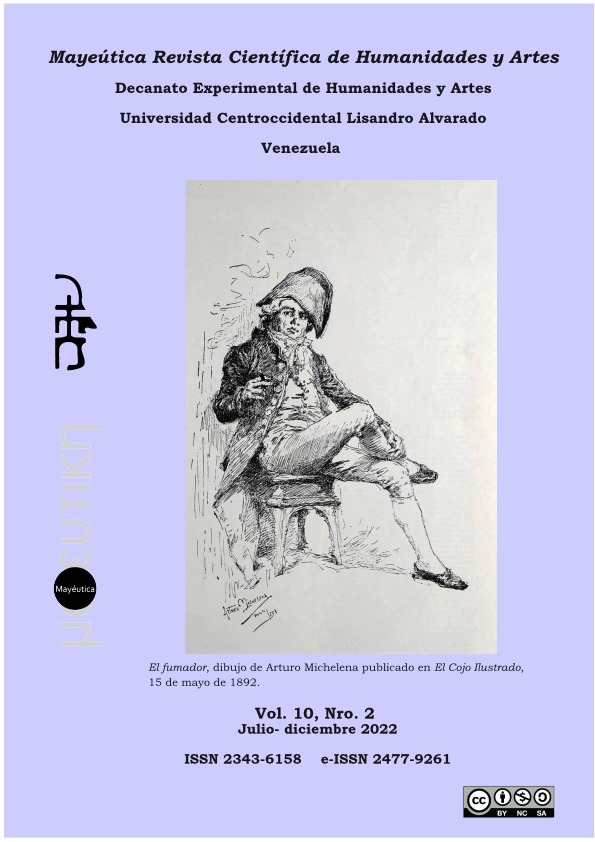The literacy of music from the traditional musics of chirimía caucana
DOI:
https://doi.org/10.5281/zenodo.6814434Keywords:
chirimía caucana, method of musical literacy, traditional music, elements of musicAbstract
Bachelor of Music students at the University of Cauca acquire pedagogical musical tools of European active methods for their professional practice, and although these provide important tools to future teachers, they lack contextualization. This research was developed to solve this problem, investigating the possibility of conceiving a contextualized method of musical literacy, taking advantage of the instrumental format and the musics of the Cauca shawms, as a complementary tool for the pedagogical and teaching practices of the students. The research method was based on ethnomusicology, with an epistemological approach to the constructivist paradigm (Valles Martínez, 1999). It was concluded that the elaboration of the method is a necessity because there are no methods of this nature in the Cauca context; The use of traditional music and the instrumental format of the Cauca shawms contributes to recovering, conserving, valuing and spreading traditional music to the new generations, increasing their sense of belonging.
Downloads
References
Alfonzo, I. M. (1988). Tecnicas de investigación bibliográfica. Contexto Editores.
Barrueco Gallardo, L. E. (2020, 10 de abril). [video].YouTube. https://www.youtube.com/watch?v=4RdQoBLjB_w
Barrueco Gallardo, L. E. (2020). Seminario de investigación educativa I. Semana 2: Ensayo Metodológico. [No publicado] Universidad de Granma.
Barrueco Gallardo, L. E. (2020, 29 de febrero). [video].YouTube. https://www.youtube.com/watch?v=oOba2S1N2Ik&feature=youtu.be
Barrueco Gallardo , L. E. (2020, 29 de febrero). [video]. YouTube. https://www.youtube.com/watch?v=8I2XcMiJVUk&feature=youtu.be
Begoña, L., y Presas, A. (2018). Musicología en el siglo XXI: nuevos retos, nuevos enfoques. Sociedad Española de Musicología.
Campbell, P. S. (2013). Etnomusicología y Educación Musical: Punto de encuentro entre música, educación y cultura. Revista Internacional de Educación Musical. 042-052.
Curbelo Martínez, D., Pérez de Armas , M., y Varela Izquierdo , N. (2011). Diseño y aplicación de un instrumento para la Evaluaciónd del Contexto de Aprendizaje en organizaciones de avanzada del territorio de Cienfuegos. Ingeniería Industrial, XXXII (2), 123-131.
Choi, H. S. (2015). El mundo musical de Corea. Música tradicional coreana a través de sus huellas históricas y la recepción de la música occidental. Universidad Politécnica de Valencia.
Grebe, M. E. (1976). Objeto, métodos, técnicas de investigación en etnomusicología: algunos problemas básicos. Revista musical chilena Vol. 30 Núm. 133 , 5-27.
Locatelle de Pergamo, A. M. (1981). Etnomusicología: metodología, aplicaciones y resultados. Revista del Instituto de Investigación Musicológica Carlos Vega No. 4. http://bibliotecadigital.uca.edu.ar/greenstone/cgibin/library.cgi?a=d&c=Revistas&d=etnomusicologia-metodologia-aplicaciones-resultados
López Cano, R., & San Cristobal Opazo, Ú. (2014). Investigación artística en música. a: Conalcuta, esmuc, ICM.
Maestro Gustavo. (2015, 9 de octubre). [video]. YouTube. https://www.youtube.com/watch?v=iXJfDZAt2qs&t=207s
Marshall, N. A., North, A. C., y Hargreaves, D. J. (2005) Educación musical en el siglo XXI. Eufonía didáctica de la música. 34, 8-32. https://dialnet.unirioja.es/servlet/articulo?codigo=1148350
Murillo, J., y Martínez, C. (2010). Investigació Etográfica. Universidad Autónoma de Madrid.
Rocca, B., Flores E, C., Ramirez, M., Toala, D., y Moro, J. C. (2014). Muestreo y Técnicas de recolección de datos. Universidad Yacambú.
Rosa Napal, F. C. (s.f.). La formación musical del futuro profesorado de educación primaria. [Tesis doctoral]. Universidad de La Coruña. https://ruc.udc.es/dspace/bitstream/handle/2183/15952/RosaNapal_FranciscoCesar_TD_2015.pdf?sequence=4&isAllowed=y
Salazar Gutierrez, P. (2016). Músicas tradicionales en espacios académicos. Civilizar Ciencias Sociales y Humanas, 16 (31), 205-218. https://doi.org/10.22518/16578953.650
Stenhouse, L. (1998). La investigación como base de la enseñanza. Ediciones Morata.
Universidad Benito Juárez. (2019). Guía académica para la estructura final de la tesis doctoral. Doctorado en Educación. https://www.ubjonline.mx/programas/doctorado-en-educacion/
Valles Martínez, M. S. (1999). Técnicas cualitativas de investgación social. Editorial Síntesis S.A.
Varela Jara, E. (2014). Como redactar indicadores en Educación Musical. Dirección Regional de Educación Los Santos. https://ddc.mep.go.cr/sites/all/files/ddc_mep_go_cr/archivos/indicadores_en_educacion_musical.pdf
Valverde Ocáriz, X. (2018). Música tradicional en el aula: las bandas de bronces de Tarapacá y sus aportaciones a la educación musical escolar. Universitat Autónoma de Barcelona. https://ddd.uab.cat/pub/tesis/2018/hdl_10803_664246/xvo1de1.pdf
Published
How to Cite
Issue
Section

This work is licensed under a Creative Commons Attribution-NonCommercial-ShareAlike 4.0 International License.





